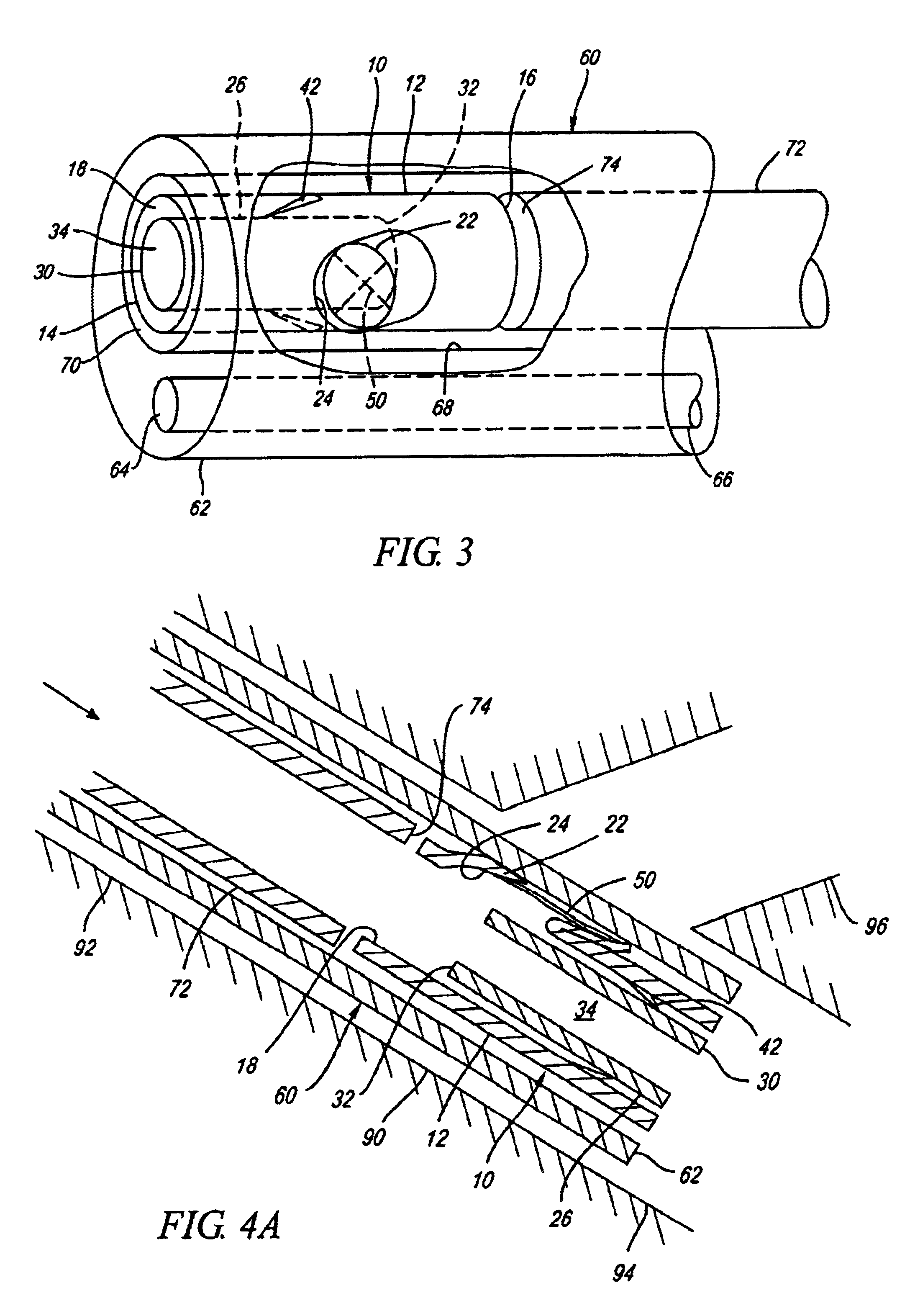Lung assist apparatus and methods for use
- Summary
- Abstract
- Description
- Claims
- Application Information
AI Technical Summary
Benefits of technology
Problems solved by technology
Method used
Image
Examples
Embodiment Construction
Turning now to the drawings, FIG. 1 shows a first preferred embodiment of a lung assist apparatus 10, in accordance with the present invention. Generally, the apparatus 10 includes a housing 12 or other support structure, a nozzle 26 disposed within at least a portion of the housing 12, and a first valve 42 disposed between the nozzle 26 and the housing 12. Preferably, the apparatus 10 also includes a second valve 50 that may control flow through a lateral opening 24 in the housing 12, as described further below. The components of the apparatus 10 are preferably attached to the housing 12, thereby providing a single deliverable device, although alternatively one or more of the components may be provided separately from the housing 12 and implanted in stages, as described further below.
The housing 12 includes a first end 14, a second end 16, and a lumen 18 therebetween, thereby defining a longitudinal axis 20. In a preferred embodiment, the housing 12 is a tubular body, e.g., formed ...
PUM
 Login to View More
Login to View More Abstract
Description
Claims
Application Information
 Login to View More
Login to View More - R&D
- Intellectual Property
- Life Sciences
- Materials
- Tech Scout
- Unparalleled Data Quality
- Higher Quality Content
- 60% Fewer Hallucinations
Browse by: Latest US Patents, China's latest patents, Technical Efficacy Thesaurus, Application Domain, Technology Topic, Popular Technical Reports.
© 2025 PatSnap. All rights reserved.Legal|Privacy policy|Modern Slavery Act Transparency Statement|Sitemap|About US| Contact US: help@patsnap.com



